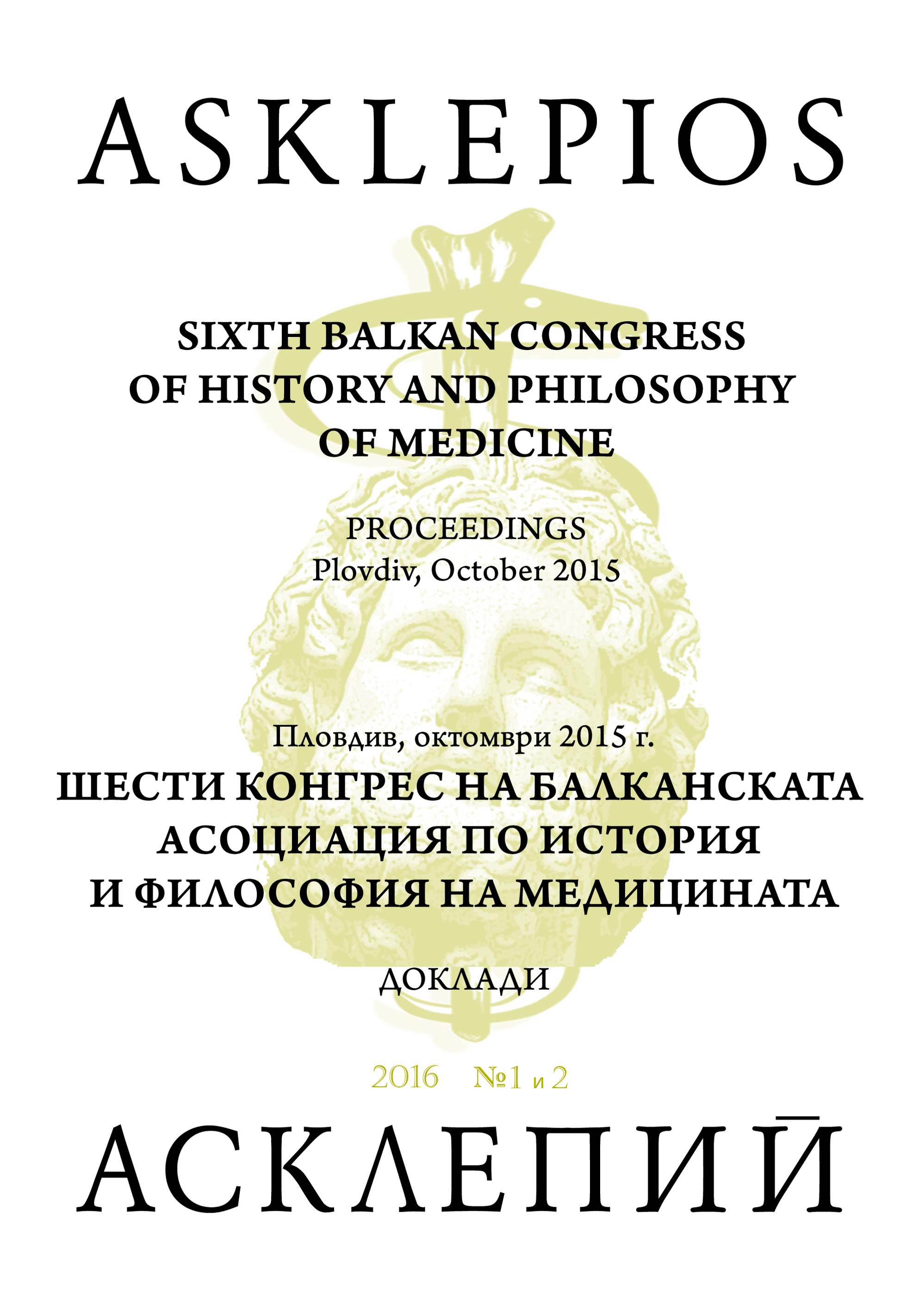Разпространение, социално значение и борба с туберкулозата в регион Кърджали – 1912–2012 г.
The spread of, the social impact of, and the struggle against tuberculosis in the Kardzhali region – 1912–2012
Author(s): Todor CherkezovSubject(s): History, Social Sciences, Cultural history, Local History / Microhistory, Recent History (1900 till today), Health and medicine and law
Published by: Балканска асоциация по история и философия на медицината (БАИФМ)
Keywords: population; region; tuberculosis; social problem; spread; conditions
Summary/Abstract: The annexation of the Kardzhali region to Bulgaria after the Balkan War in 1912 was the basic reason for the region’s belated social and economic development, with a negative influence on communal health. Until that historic moment, the local population lived in extremely miserable conditions and rudimentary hygiene, treated by self-proclaimed imam healers, Turkish doctors, and quacks. Diseases were widely spread, a large part of the population died out of spotted fever, malaria, and tuberculosis. Famine, the unhygienic conditions of life and work in the tobacco warehouses, the swarming thousands of refugees coming from White Sea Thrace, were important reasons for the spreading of tuberculosis which afflicted the majority of the region’s active young generation. The world economic crisis of 1928 further aggravated that communal health problem. Tuberculosis was given a special prominence was in the new Law of Public Health passed in 1929. An important role in the struggle against it was regionally played by the newly-opened, in 1932, hospital in Kardzhali and also the pavilion for consumptives, opened in 1940. After September 9th, 1944, fighting tuberculosis becomes more systematic and purposeful. In 1953, the requirements for executing Decree #699 and Ministerial Order #798 were adopted, containing a complex of measures towards overcoming the ailment. Despite opening a network of specialized establishments – hospitals, consulting offices and dispensaries, the diseases continued to spread, although at a far slower rate, mainly among the village populace prevailing in the Kardzhali region. Only in the period 1985–1990 was there a levelling between the data on the ailment’s spread in the region and the data on its spread in the country. Although much less active now, we still cannot think tuberculosis has been defeated in the Kardzhali region. Unfortunately, at the beginning of the 21st century the ancient conditions for the ailment’s spread are being resuscitated: a poor rustic population with a low health culture, unemployment, uniform and inadequate meals, a deteriorated general living standard.
Journal: Асклепий. Международно списание по история и философия на медицината
- Issue Year: XI/2016
- Issue No: 01+02
- Page Range: 380-387
- Page Count: 8
- Language: Bulgarian
- Content File-PDF

